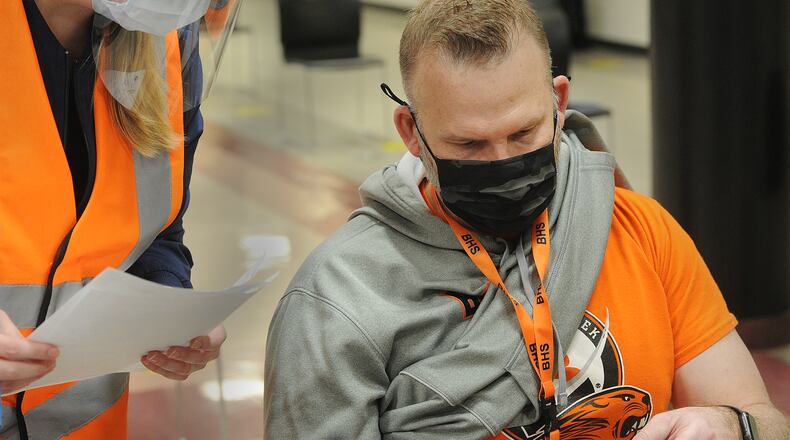Ohio Department of Education spokeswoman Mandy Minick said this week that a little-discussed piece of that legislation says any school that submitted a remote learning plan for 2020-21 and followed its provisions was considered to have met the state rules for “minimum hours of instruction” that have been in place since 2014-15.
In a normal year, charter schools must be “open for instruction” for at least 920 hours. All other schools have minimums of 455 hours for half-day kindergarten, 910 hours for full-day kindergarten through sixth grade, and 1,001 hours for grades 7-12.
Those requirements replaced the old system of “calamity days” where schools had to make up snow days if they missed more than five, to ensure they had enough days in school.
About 85% of local public, charter and career tech schools submitted a remote learning plan for 2020-21. A handful that didn’t, including Kettering and Vandalia-Butler, are covered by a “blended learning declaration,” which also waives the hours requirement, according to the Ohio School Boards Association.
“This should not be perceived as an excuse for districts to reduce their instructional hours they provide to students learning in person, nor do I think this is actually happening in practice,” said Will Schwartz, deputy director of legislative services for OSBA.
Mad River schools are a good example of that. The district has been operating all year on a hybrid model where students attend school in-person 2-3 days per week, and learn remotely the other days. When this winter’s first storms hit, they took regular snow days off. But Superintendent Chad Wyen said as of Thursday, any further weather-related closures will turn into remote-learning days.
“The fact that our students have been out of school has caused more disruption to their educational experience in Mad River,” Wyen said.
Eaton schools chose to use the same terminology from seven years ago in their approach. The district said after five closure “calamity” days it would switch to online learning days. Thursday was their second such “e-Day,” with teachers providing lessons via Google Classroom.
More than 20 Dayton-area schools and districts turned Thursday into a remote learning day after snow hit overnight, while a much smaller number took the day completely off.
But not having to meet a strict number of hours of instruction has also given schools some flexibility in this odd year. Minick said Ohio schools have the local control to choose whether people need a “mental health day,” or that it’s important to pull out the Chromebooks and get to work on a snow day.
Credit:
Credit:
In Beavercreek, schools were closed Thursday not due to weather, but so teachers and staff could receive the first dose of the COVID-19 vaccine.
Beavercreek High School Principal Dale Wren said that was a great opportunity.
“It’s been a long year with a lot of anxiety and uncertainty at every turn,” Wren said. “This (vaccine) is an extra layer of protection and probably the biggest step forward on that long road back to normal.”
Minick said there are only about five Dayton-area schools that have neither a remote learning plan nor a blended learning declaration on file with the state. But she said ODE is still discovering cases where districts created a plan and the state didn’t receive it. She said legal language is not clear on what the consequences would be for a school that had no plan and didn’t meet the required hours of instruction.
Schwartz said schools using remote learning plans still have requirements for tracking and reporting student attendance, and schools using blended models must make sure students keep engaging in their learning opportunities.
He said planning for the 2021-22 school year is already under way, and he called on legislators to give schools multiple options to serve students.
“One of those tools would be to extend the remote learning flexibility into next school year,” Schwartz said. “School leaders need all the tools that can be available to them, especially for those students who are immunocompromised, quarantined, or have family members with medical issues.”
About the Author


